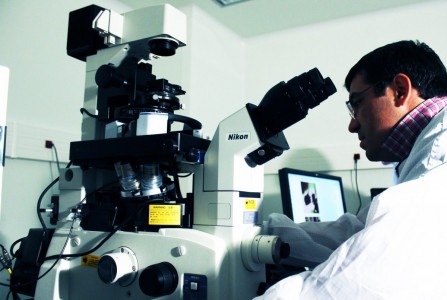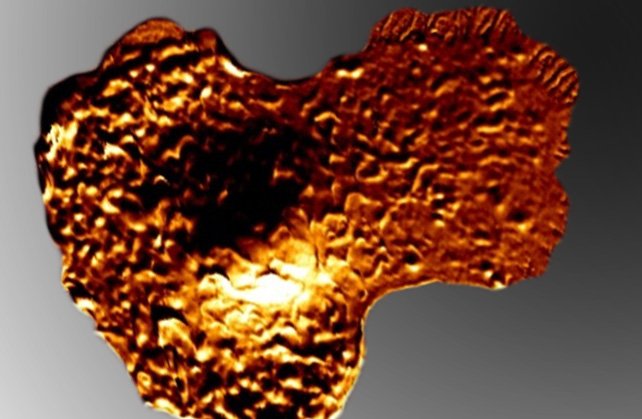 |
For observation and characterization |

|
Atomic force microscopy (AFM) can access surface topography at the nanoscale in addition to probing its mechanical properties (Young’s modulus, adhesion, friction). If optical microscopy is the extension of the researcher’s eye, then AFM is the extension of its hand. The JPK NanoWizard II and Bruker Catalyst models available at Restore are coupled to epifluorescent inverted optical microscopes. This makes it possible to correlate the different sources of information on scans extending up to 120 µm per side. These devices, specifically designed for working in liquid medium at a controlled temperature, are just as adapted for studying living cells and tissues as for probing matter at the molecular level. They can thus be used to demonstrate the mechanical (adhesion, rigidity, friction, etc.) and topographical (height, width, roughness, etc.) properties of the studied compounds.

Human macrophage with a clearly visible surface structure
Services:
- Original coupling of AFM-optical microscopy
- Force spectroscopy in air and liquid with points functionalized by surface chemistry
- Topography in contact mode, tapping and quantitative imaging in air and liquid
- Nano-manipulation of biological objects (cells, bacteria, viruses) and measurement of interaction
Access mode:
- With assistance
- Autonomous (after training)
- Service delivery
ATOMIC FORCE MICROSCOPE (AFM)
Name |
Characteristic techniques |
Location |
| NanoWizard® II – JPK (Life Science Version) | Inverted light microscope coupling, numerous modes, sample holder for coverslips with thermoregulated and CO2-controlled chamber | Restore – Oncopole |
| Bioscope Catalyst – Bruker | Inverted light microscope coupling, numerous modes, sample holder for petri dish with thermoregulated and CO2-controlled chamber | Restore – Oncopole |


